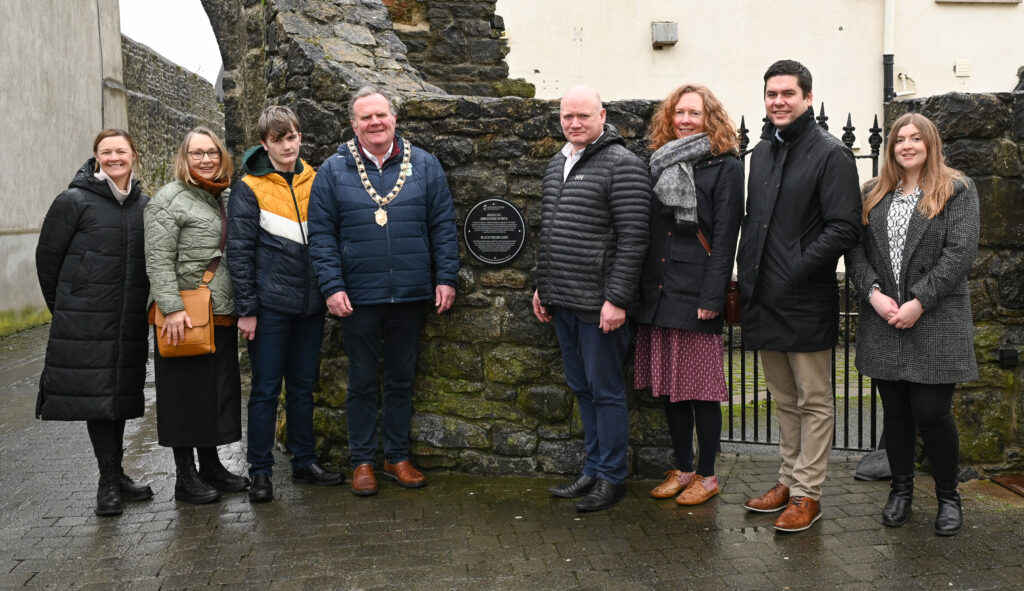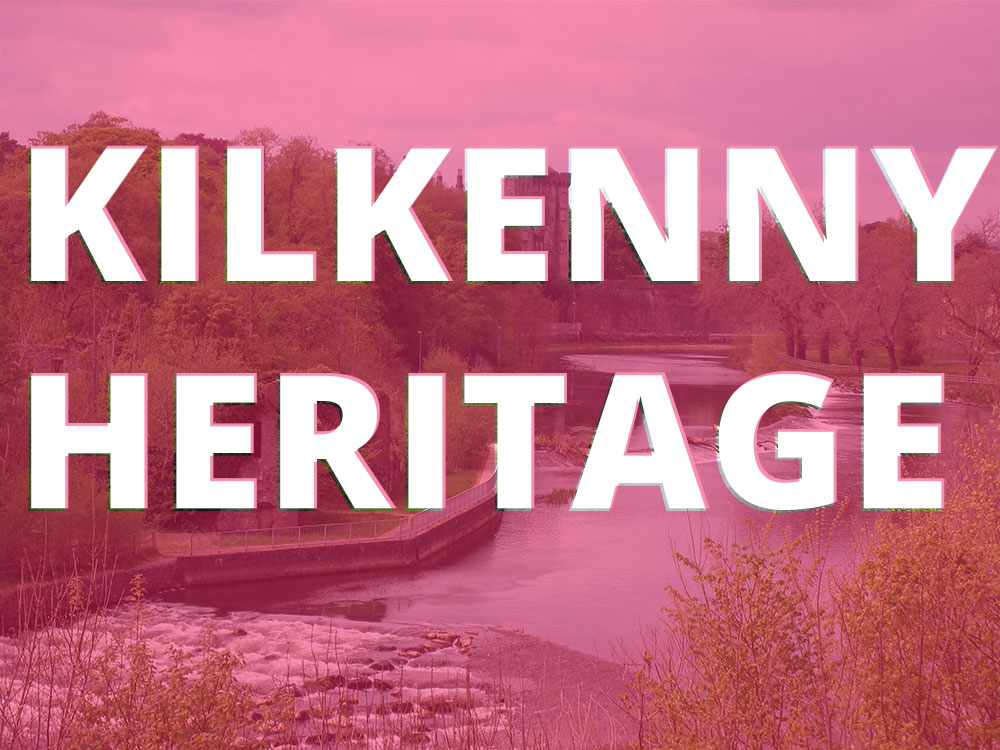New information plaques have been installed at five sections of Kilkenny’s City Walls. These tasteful signs are part of Kilkenny County Council’s strategy to highlight our heritage, and provide information for local people and visitors about the former medieval city walls.
Co-funded by the Heritage Council’s Irish Walled Towns Network and Kilkenny County Council, the signage has been installed at Troy’s Gate; Black Friar’s Gate; the Black Abbey carpark; Ormonde Street and Ormonde Road. This new signage complements existing city wall signage at Talbots Tower, James Street and addressing the recommendations for interpretation in the Kilkenny City Walls Conservation Plan.
Black Friars (Freren) Gate, built in the 13th Century was named after the Friars in the nearby Dominican Friary (Black Abbey) who wore black robes, and were key holders for the gate. A gatekeeper, who lived in a tower above the gate collected taxes and controlled access into the Angle-Norman borough of Hightown. one of seven gatehouses built in the city walls by the Anglo Normans in the 1300’s.

New City wall plaque at Black Friars Gate. L-R Regina Fitzpatrick, Heritage Officer, Cllr Maria Dollard, Ronan Hanrahan, TY student, Cllr Joe Malone, Cllr David Fitzgerald, Eimear O’Connell Project Coordinator of the Irish Walled Towns Network, Cllr Andrew McGuinness, Diane Seale, Heritage Office, Kilkenny County Council.
Troy’s Gate was one of four gates into the medieval borough of Irishtown. Irishtown grew up around the ancient monastic settlement of St Canice, which was founded approximately 500 years before the Anglo-Normans came to Ireland. The gate gets its name from the de Troyes who were Anglo-Norman knights. Kilkenny County Council are grateful to the Rt Reverend Adrian Wilkinson, Bishop of Cashel, Waterford, Lismore, Ferns, Ossory and Lions for his permission to install the signage at the entrance to his residence.
Although much of the original 2 miles of medieval city walls have been lost over the last hundreds of years, the foundations of the walls still exist beneath the streets of Kilkenny. And in some sections, such as beside the Black abbey carpark, an impressive section of the walls still stands. This original wall had a parapet from which the Anglo-Normans patrolled the city.
The remains of the wall lie beneath Ormonde Street and Ormonde Road demarked by the paving on the footpaths and the new signage. When Ormonde Road was created in 1836, this section of the wall as removed. It had joined Talbot’s Tower to St Patrick’s Gate, one of the seven gates into the borough of Hightown.
Kilkenny’s city walls were built by the Anglo Normans in the 13th century. They gave protection for the colonists living inside, and were a symbol of authority over the native Irish. The construction of the city walls in the 13th century was the largest civic project ever undertaken in Kilkenny, and measuring over two miles in length, the walls were the longest in Ireland at that time. 25% of the city walls still stand above ground today, the rest remain as archaeology hidden beneath our feet.
County Kilkenny has a rich medieval heritage which includes a number of walled towns and villages, of which Kilkenny City is the best known. The others are Callan, Gowran, Inistioge and Thomastown. The National Policy on Town Defences sets out national policy for the protection, preservation and conservation of walled towns and cities.
According to Kilkenny County Council Heritage Officer, Regina Fitzpatrick, “The city walls are of great importance both locally and nationally due to their survival and the fact that they define the layout of the medieval city. We hope that these plaques will create awareness and engage local people and visitors alike to this rich aspect of our heritage.”
For further information on Kilkenny’s City Walls, see www.kilkennyheritage.ie .
Photo Credit: Vicky Comerford







